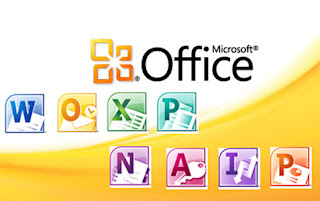
Once a topic has been chosen, ideas have been generated through brainstorming and free writing, and a working thesis has been created, the last step a writer can perform in the prewriting stage is creating an outline. An outline allows a writer to categorize the main points, to organize the paragraphs into an order that makes sense, and to make sure that each paragraph/idea can be fully developed. Essentially, an outline helps prevent a writer from getting stuck when performing the actual writing of the essay. An outline provides a map of where to go with the essay. A well-developed outline will show what the thesis of the essay is, what the main idea of each body paragraph is, and the evidence/support that will be offered in each paragraph to substantiate the main points. An outline presents a picture of the main ideas and the supporting ideas of a paragraph. The skill of outlining will help you organize and remember what you hear or read. Outlining means to write information in order, from the most important to the least important. Outlining will help you learn how to take notes and remember the main ideas of what you've read.
In brief an outline
is:
- A logical, general description
- A schematic summary
- An organizational pattern
- A visual and conceptual design of your writing
An outline reflects
logical thinking and correct classification.
PURPOSE
Generally
- Aids you in the process of writing
Particularly
- Helps organize your ideas
- Presents your material in a logical form
- Shows the relationship of ideas in your writing
- Constructs an ordered overview of your writing
- Defines boundaries and groups
PROCESS
Before you begin:
- Determine the purpose of your paper.
- Determine the thesis of your paper.
- Determine the audience you are writing for.
Then:
- Brainstorm - List all the ideas you want to include in this writing.
- Organize - Group ideas together that are related to each other.
- Order - Divide this material into groups arranging from the general to the specific, or from abstract to concrete.
- Label - Create main and subtopic headings and write coordinate levels in parallel form.
How Computers help
us in outlining
Generally word processors contain some
form of outliner, a feature that allows you to split a focus into a
hierarchical order with main points and sub points. Your computer maintains
track of the levels of ideas automatically so that you can easily add, cut, or
rearrange points in the outline. The outline feature creates fast work of
organizing long or complex documents, procedures, and presentations. You can
promote or demote items in the outline hierarchy by changing their indentation.
You can also organize information into headings and subheadings, apply numbered
and bulleted lists, and control which levels of information are displayed. The outline feature in Microsoft Office OneNote
2007 makes quick work of organizing long or complex documents, plans, and
presentations
Outlining With Microsoft Word
 Outlines
are a way to organize your writing or data into a hierarchy of levels, and
Microsoft Word has a tool to facilitate the easy creation of outlines. The
program will generate an outline for you if you already created a list or
written document, and you also have the freedom to start an outline from
scratch.
Outlines
are a way to organize your writing or data into a hierarchy of levels, and
Microsoft Word has a tool to facilitate the easy creation of outlines. The
program will generate an outline for you if you already created a list or
written document, and you also have the freedom to start an outline from
scratch.Outlining Existing Documents
If you
already created a document in Word and you want to see how it appears as an
organized outline, open the document and then click the "View" tab in
the ribbon at the top of the document. Select the "Outline View" icon
to temporarily change the document to an outline. Don't worry -- the original
formatting of your document is not lost. Clicking "Close Outline
View" will return your document to its original format. Choose "Save
As" and create a new name for the document if you want to save a copy of
the Outline View version of your document.
Changing Levels
When
Microsoft Word changes your document to an outline, it guesses which text
should be a header, a subhead and so on. If you disagree with one of the levels
selected by Word, click on the line and then go to the "Level"
drop-down menu in the top-left corner of the outline view ribbon. Choose a new
level for the text -- the higher the level, the farther to the right the text
will be placed. For example, "Level 1" text is aligned to the left,
and "Level 2" is one tab to the right. Alternatively, use the arrows
to the right and left of the level menu to move the text up and down by a
level.
Starting From Scratch
You
don't have to convert an existing document to an outline -- it is also possible
to start an outline from scratch. Open a blank document and go to the
"View" tab on the ribbon. Choose the "Outline View" icon to
open a blank outline screen. Begin typing; by default, the outline will begin
with a "Level 1" header. Switch to a new level by hitting the
"Tab" key on your keyboard or using the "Level" drop-down
menu in the ribbon.
Templates
If you
want to create a more visually interesting outline, Microsoft offers outline
templates for free download. Visit the Microsoft
Office website at Office.microsoft.com and search for "Outline
Templates." Click once on the thumbnail of an outline to preview it, and
then click the green "Download" icon to get a copy on your computer.
After you click "Agree" for the cookies agreement, a copy of the
template will be saved to your Word program.
No comments:
Post a Comment